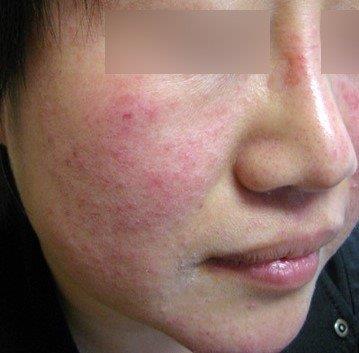The causes of rosacea are unknown. However, research is ongoing and these pathways are thought to be involved:

The body’s immune system defends against infection through various inflammatory mediators – molecules that are released by the immune system cells when the body is under ‘attack’.
Researchers believe one of these mediators, cathelicidin, part of the innate immune system – the first line of defence – may be involved in causing rosacea.
The innate immune system responds immediately to ‘attacks’ through the following inflammatory reactions in the skin:
For rosacea sufferers, this inflammatory response happens over and over again resulting in time in permanently dilated (open) blood vessels and irritation giving skin a red, ruddy look, and for some pimples, rough, dry patches and other signs of rosacea.
The outer layer of our skin forms a natural barrier that keeps out bacteria and dirt and retains moisture.

Rosacea sufferers often have highly sensitive skin, leading researchers to suggest the skin’s barrier function is impaired.
A recent study showed the facial skin of rosacea sufferers is in fact more sensitive to irritation and prone to dryness compared to normal facial skin.
A weakened skin barrier may be a factor in causing rosacea since this contributes to the inflammatory response seen and is linked to the innate immune system reaction mentioned above.
To boost the protective abilities of the skin barrier and help reduce the effects of rosacea, check out our Skincare tips.

Up to 30% of rosacea sufferers have a family history of the condition leading researchers to believe it involves as yet unidentified genes, and for some, this is an inherited condition.

Added to this, some people in Northern European countries such as Estonia have much higher rates of rosacea – 22% – than people in other parts of Europe like Germany at 2.2%.

Investigators continue to examine areas such as the vascular system of the face for answers to the flushing symptoms of rosacea.
The nervous system is another area of research. The skin of rosacea sufferers has a significantly lower heat-pain threshold compared to normal skin.
Microscopic Demodex mites present in human skin have been thought to be implicated in causing rosacea in some people since sufferers have a higher prevalence of these mites than normal and may be more immunologically reactive to the mite, or possibly even reacting to the bacteria in the gut of this mite. However, having a greater number of these mites is now thought to aggravate rosacea rather than be a cause of it.